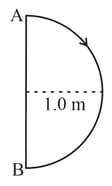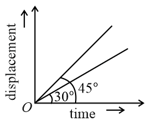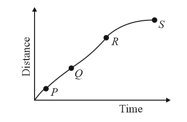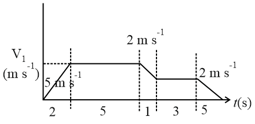MEDIUM
Earn 100
Describe the process of calculating the average velocity from the position-time graph for a given time interval.
Important Questions on Motion in a Straight Line
MEDIUM
MEDIUM
EASY
MEDIUM
EASY
In a particle goes from moving in a semicircle of radius (as shown in the figure)

The magnitude of the average velocity is
MEDIUM
MEDIUM
EASY
MEDIUM
The displacement-time graphs of two moving particles make angles of and with the -axis as shown in the figure. The ratio of their respective velocity is:

MEDIUM
MEDIUM
EASY
A particle shows the distance-time curve as shown in the figure. The maximum instantaneous velocity of the particle is around the point.

EASY
A fly is in rectilinear motion as described by the graph. The average speed of the fly is

HARD
MEDIUM
EASY
MEDIUM
EASY
MEDIUM
EASY

